


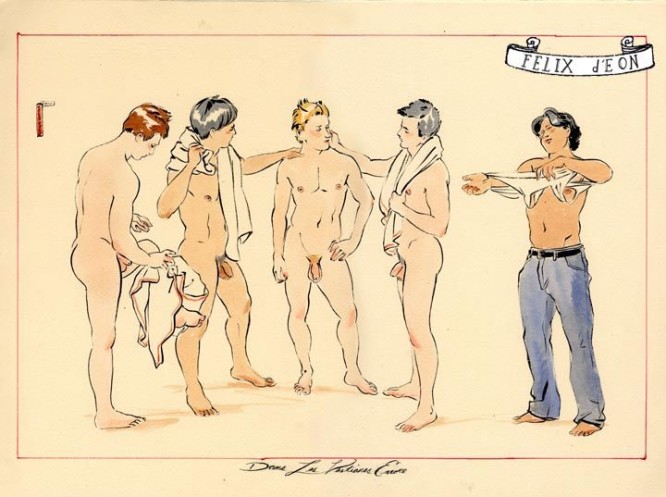

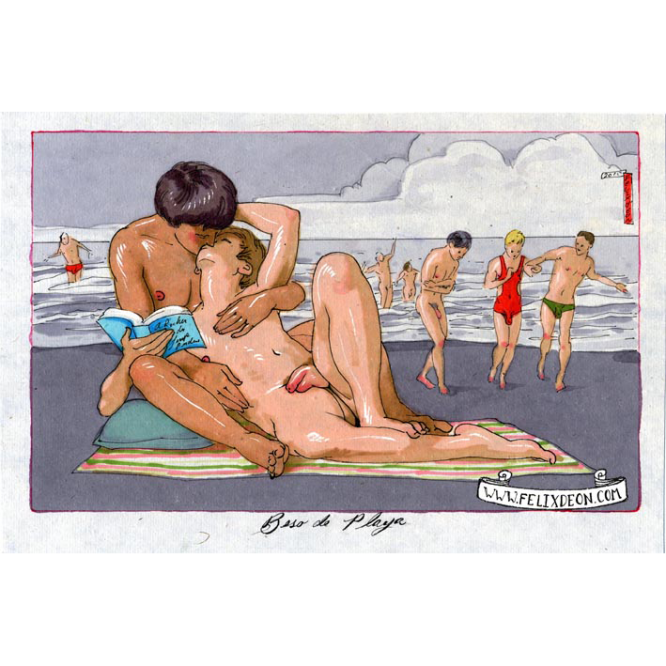
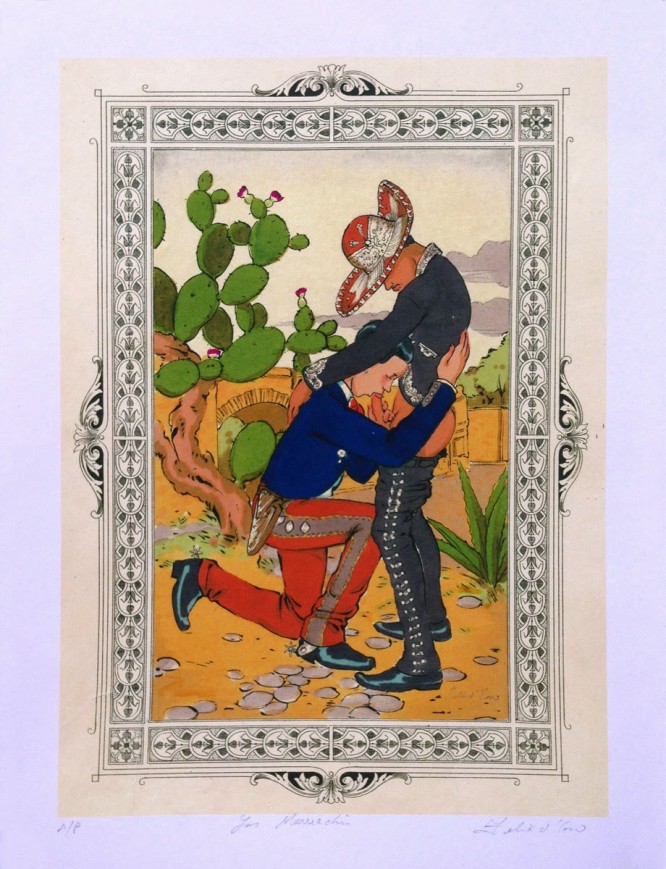
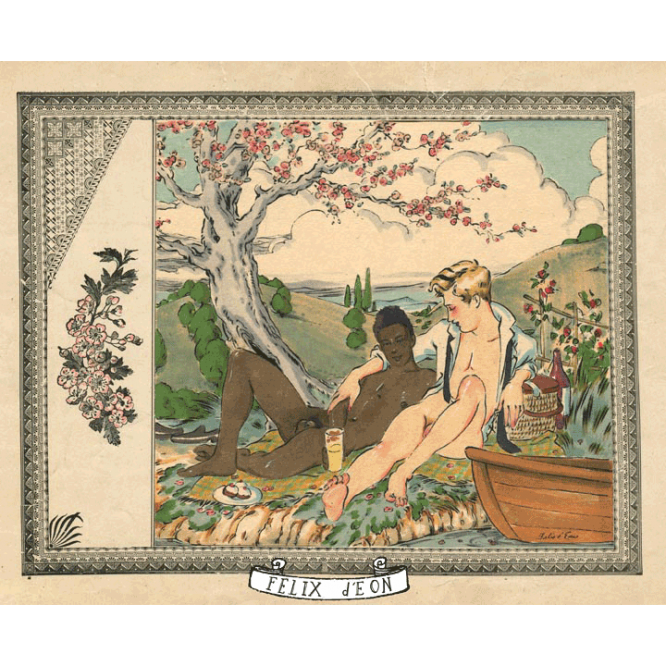
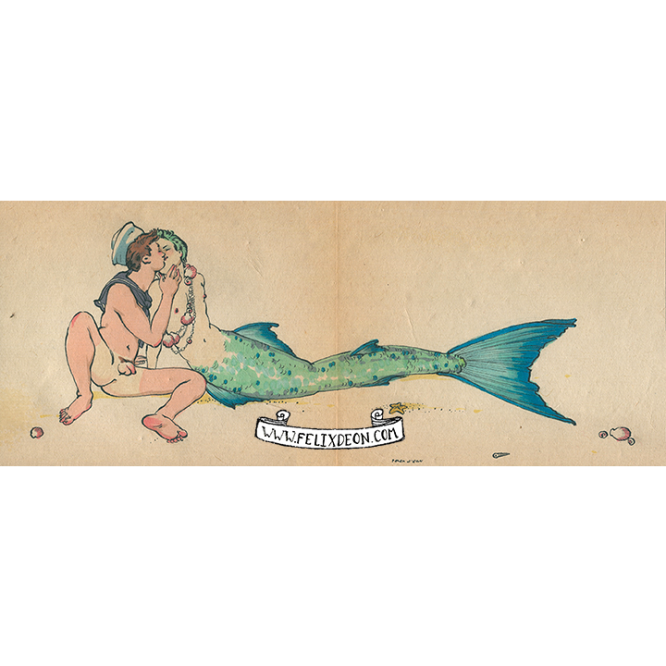

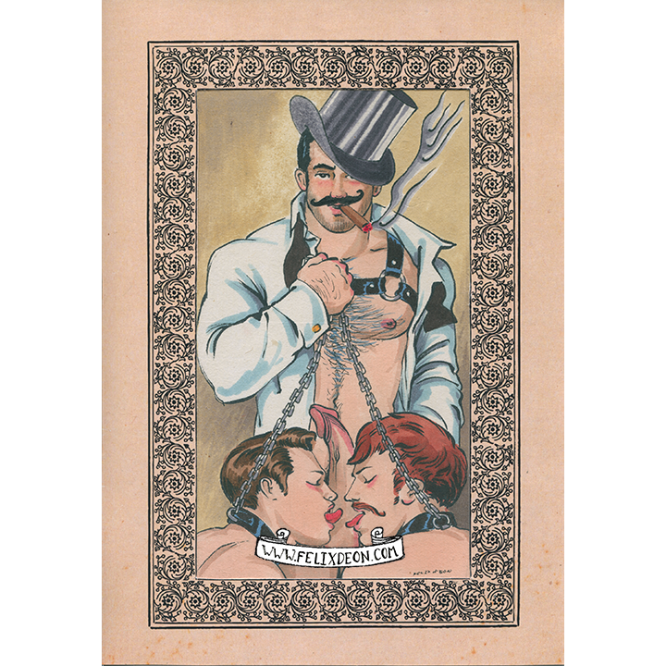
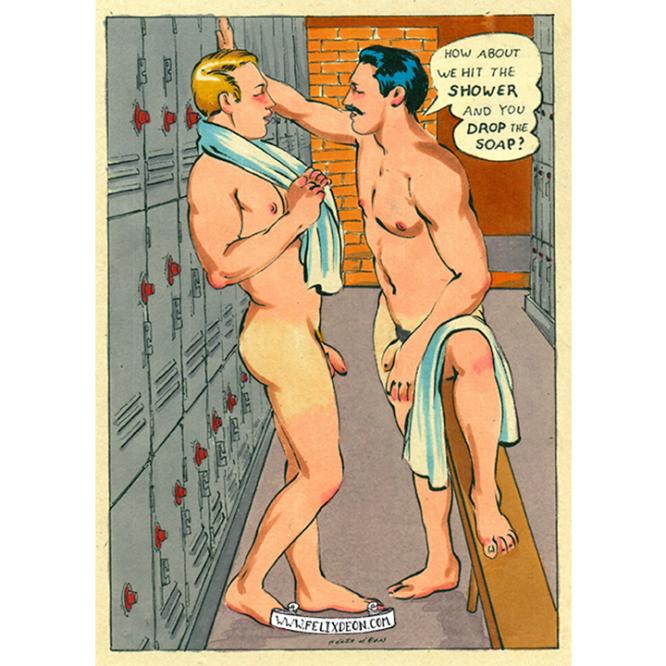
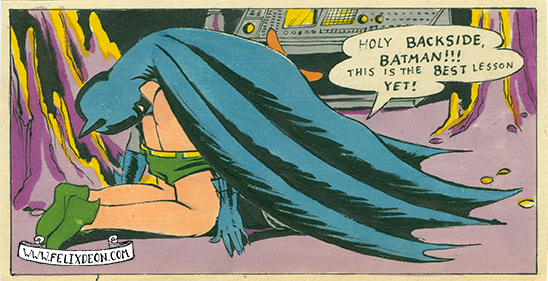

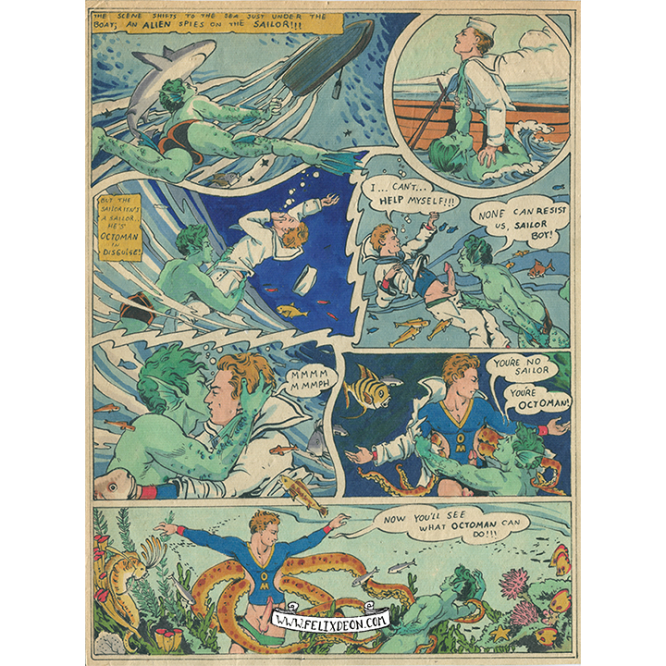
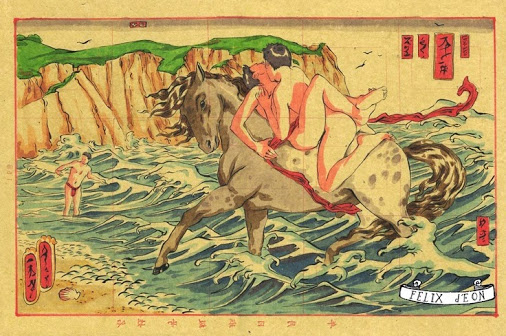
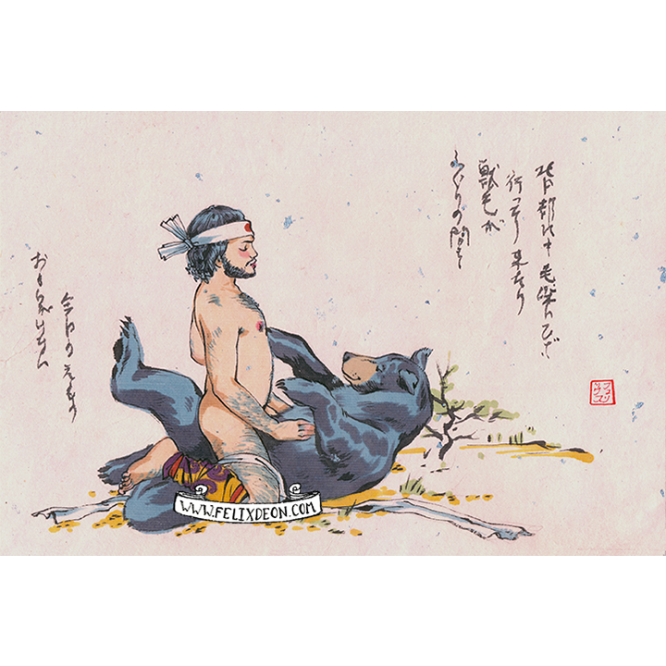
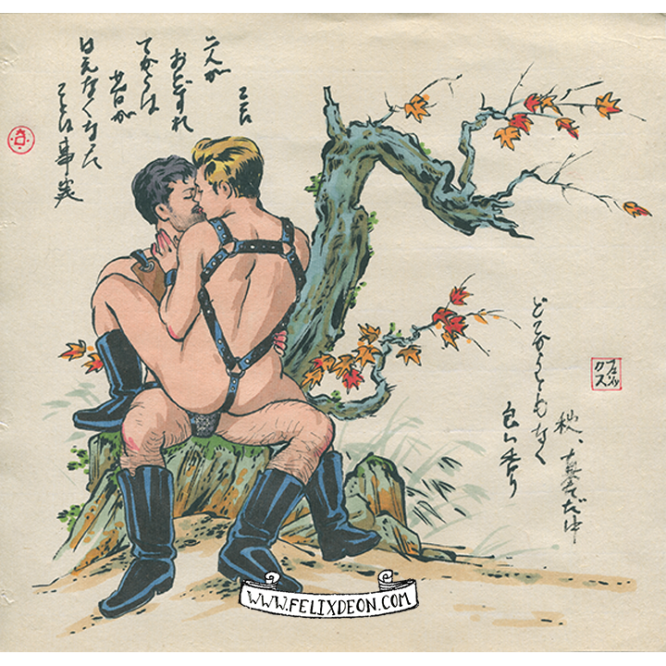


He is enraptured by various art-historical styles, such as Edwardian fashion and children’s book illustration, golden-era American comics, and Japanese Edo printmaking. In his work, he attempts to make the illusion of antiquity complete, using antique papers and careful research as to costume, set, and style. His goal is perfect verisimilitude. He subverts their «wholesome» image and harnesses their style to a vision of gay love and sensibility. D’Eon treats vintage illustrative styles as a rhetorical strategy, using their language of romance, economic power, and aesthetic sensibility as a tool with which to tell stories of historically oppressed and marginalized queer communities. By painting images of queer love, seduction, sex, and romance, the gay subject is stripped of its taboo nature. For unlike artists such as Tom of Finland, whose work is a celebration of the outlaw status of queer sexuality, d’Eon’s work seeks to normalize the marginal, and place the heretofore taboo subject at the center, through the use of the rhetorical styles of the historically empowered and mainstream. In the artists work, the illustrative imagery of the past does not cease to be wholesome through the inclusion of gay sex and sensibilities. He simply expands the notion of what wholesome is, erasing shame and celebrating desire.
Deja una respuesta